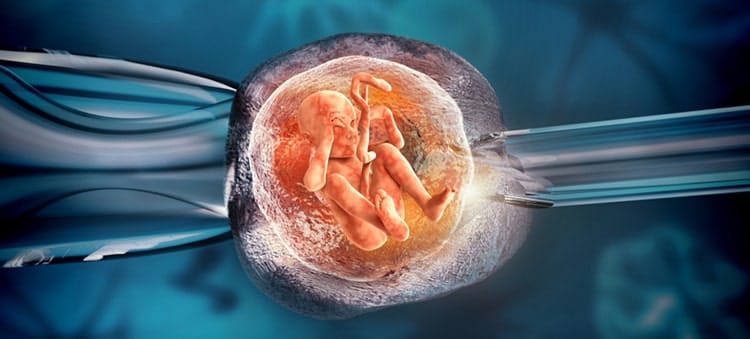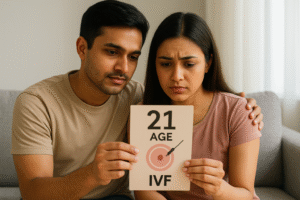An IVF journey is a unique path for many couples aiming to become parents. Unlike traditional pregnancies, an IVF pregnancy comes with its own timeline, symptoms, and safety guidelines. Understanding what to expect week by week can help make the process smoother and bring a sense of reassurance. Here’s a comprehensive week-by-week guide to an IVF pregnancy, covering symptoms, safety measures, and key milestones.
Weeks 1-4: Conception and Early Signs
In the initial weeks, the fertilized embryo is carefully transferred into the uterus, where it begins the implantation process. This period marks the official start of an IVF pregnancy, though physical signs might still be minimal. During this time, some women might notice symptoms after embryo transfer, such as slight cramping or light spotting, known as implantation bleeding. While these are early indicators of a successful implantation, confirmation through a blood test or an early ultrasound is essential.
Safety Tips for Weeks 1-4:
- Avoid alcohol, smoking, and any unapproved medications.
Maintain a healthy, balanced diet and keep yourself well-hydrated. Keeping a healthy, balanced diet and staying hydrated is super important. A lot of people wonder, ‘When is an IVF pregnancy considered safe?’ Generally, after the first trimester—about 12 weeks in—the pregnancy is seen as more stable because the chances of miscarriage drop quite a bit.
Weeks 5-8: Early Pregnancy Symptoms
At around five weeks, typical IVF pregnancy symptoms start to surface as the embryo develops:
- Nausea or morning sickness
- Fatigue
- Breast tenderness
- Mood swings
These symptoms occur as hormone levels fluctuate, signaling early stages of pregnancy. However, if symptoms like severe pain or excessive vomiting arise, consult your doctor, as these could indicate OHSS (Ovarian Hyperstimulation Syndrome), particularly in cases of fresh embryo transfer.
During these weeks, regular prenatal check-ups play a critical role. These appointments help healthcare providers monitor the pregnancy’s progress and address any concerns. To support a healthy pregnancy, prenatal vitamins and nutrient-rich foods are often recommended.
Weeks 9-12: Transition to the Second Trimester
As the pregnancy progresses, many early symptoms ease off, and energy levels start to stabilize. Around this time, new signs might appear, including round ligament pain or skin changes, such as darkening around the areolas. These shifts signal that your body is adapting to the pregnancy.
Entering the second trimester is a key point for many expecting parents, as successful pregnancy after IVF week by week becomes more certain. Genetic screenings, such as Non-Invasive Prenatal Testing (NIPT), are usually performed during this phase. This test helps identify potential genetic conditions in the baby, giving both parents and doctors more insight into the pregnancy’s health.
Hitting the 12-week mark at the end of the first trimester is a big milestone. Around this time, the risk of miscarriage decreases a lot, which can feel like a huge relief for many expecting parents.
Weeks 13-16: Growing Comfort and Development
By now, parents may begin to feel a stronger bond with their developing baby. Many early discomforts subside, though new challenges, like heartburn and shortness of breath, may arise as the baby grows. Light exercise, with your doctor’s approval, can help manage these symptoms.
Some parents choose additional tests like amniocentesis or chorionic villus sampling (CVS) to identify potential genetic conditions. This phase can be reassuring, as the baby’s development becomes more predictable and stable, giving parents peace of mind.
Weeks 17-20: Mid-Pregnancy Milestones
At around 17 weeks, expectant parents may begin to feel slight movements, adding excitement to the journey. Regular ultrasounds and prenatal check-ups are crucial, especially for tracking fetal development and ensuring maternal health.
By reaching the halfway point of pregnancy, parents are often advised to monitor for potential complications, such as gestational diabetes. Maintaining a balanced diet and staying active help keep both mother and baby healthy. This period represents a turning point in a pregnancy after IVF week by week, where both parents and doctors can more clearly monitor progress.
Read More: How to Improve AMH Levels and Boost Fertility Naturally
Weeks 21-24: Preparing for the Third Trimester
These weeks are focused on preparing for the eventual delivery. Major anomaly scans and potentially a fetal echocardiogram are performed to assess fetal health. As parents near the third trimester, discussing childbirth options and creating a birth plan becomes essential. This is a good time to look into childbirth classes and postpartum support plans.
With these preparations in place, the focus is on creating a smooth transition into parenthood. Discussing pain management options and labor preferences with healthcare providers helps ensure a positive birth experience.
Weeks 25-28: Entering the Third Trimester
At this stage, both excitement and anticipation start to build. The baby’s movements become more distinct, and maternal symptoms like back pain or swelling may become more noticeable. Staying well-hydrated and getting enough rest are essential for managing these challenges.
Babies born at 28 weeks now have high survival rates, which offers a measure of comfort to parents. However, every day spent in utero at this stage helps ensure a healthier baby, so close monitoring remains important.
Weeks 29-32: Final Preparations
As parents approach the final stretch, focus shifts to kick counts and other fetal movement indicators, which are signs of a healthy pregnancy. Discussing labor preferences and finalizing pain management plans with healthcare providers prepares both parents and the medical team for a smooth delivery process.
At this point, the body is in the final stages of preparing for childbirth. Open communication with healthcare providers ensures any questions or concerns are addressed, giving parents confidence as the due date approaches.
Weeks 33-36: Nearing the Finish Line
The anticipation of meeting the baby intensifies as the due date approaches. Common symptoms like swelling and back pain may persist, but regular prenatal visits ensure everything is progressing as expected. Babies born after 34 weeks typically need little or no additional support, a relief as delivery nears.
Weeks 37-40: Full-Term and Ready for Delivery
By now, labor signs, such as contractions, may become more frequent. Staying prepared by recognizing the signs of labor and having a hospital bag ready is essential. Reaching this stage signifies a successful pregnancy after IVF week by week.
This week-by-week journey highlights important milestones and the special care needed during an IVF pregnancy. Whether it’s keeping track of symptoms after embryo transfer or preparing for birth, each step brings you closer to a safe, healthy arrival.
Navigating an IVF pregnancy requires care and regular check-ups, but with each passing week, parents can confidently look forward to meeting their little one.
Read More: What to Expect After Your IVF Frozen Embryo Transfer: A Comprehensive Guide









 No need to worry, your data is 100% Safe with us!
No need to worry, your data is 100% Safe with us!